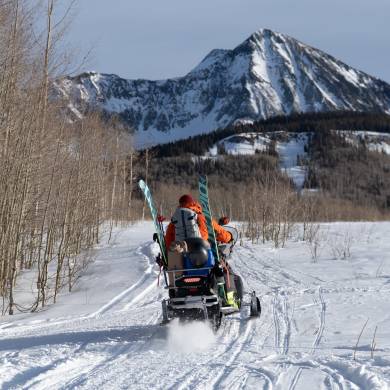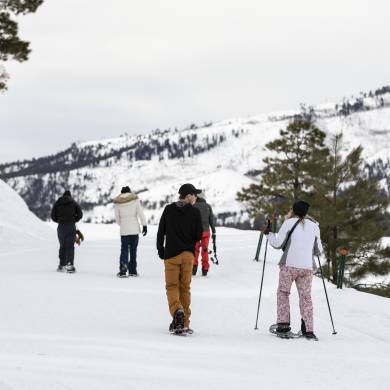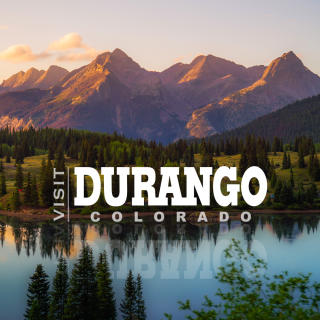In my role as executive director at Visit Durango, I hear mixed feedback about the tourism industry. Most people recognize its importance as a driver of economic impact, but there is always a small subset of the community that blames tourism for certain fundamental issues. I have heard “we don’t want to become a tourist town” more than once. When I hear this feedback, I listen. This listening carried over to research we recently conducted, and I was surprised by some of the results.
As you may have read in my previous columns, Visit Durango is shifting to a more collaborative and community-focused destination management model. Our organization is not operating in a bubble. One of our first steps in breaking out of a silo is to gather feedback and data from our local businesses. In February, Visit Durango conducted a Tourism Business Stakeholder Survey. The survey was filled out by 212 stakeholders, an excellent sample size for measuring the impacts of tourism in our community.
Of those that filled out the survey, 91% were local and independently-owned businesses. The largest industries that responded were, unsurprisingly, the lodging community, but also, following closely behind, the arts, retail, and dining segments had the strongest representation. Other sectors contributed as well. Everyone from government officials to hair salons to whitewater rafting guides. Of the small-business owners, they reported that 61% of their patrons are visitors. What does that mean? Over half of our businesses are able to survive because of tourism!
As one might guess, the survey indicated that 74% of the attractions sector and 77% of the outdoor recreation sector are funded by visitors. The top attractions in the area are the Durango & Silverton Narrow Gauge Railroad, outdoor recreation (particularly cycling/mountain biking, skiing/snowboarding, and whitewater rafting) and our proximity to national parks and monuments, such as Mesa Verde National Park. But even segments that are thought of as less tourism-focused relied heavily on out-of-towners. Forty-eight percent of the restaurant patrons are visitors, a whopping 62% of retail sales are from visitors and even the arts sector reported 51% of their business coming from visitors.
According to the Southwest Colorado Economic Outlook Forum, which was held at Fort Lewis College earlier this year, tourism is the largest industry of La Plata County’s economy. One in four jobs is created by the tourism economy. Tourism accounts for one-third of Durango’s economy, and one-third of city sales tax revenue is from visitors. In the state of Colorado, tourism saves every household $658.81 in taxes every year.
In a hypothetical world, where tourism was not a large part of the Durango economy, imagine over half the businesses on Main Avenue shuttering their doors. Imagine half of the restaurants you love going out of business. Imagine one in four jobs in La Plata County going away. If there is one thing this survey made clear, it’s that tourism fuels Durango’s small businesses. By helping Durango’s beloved businesses thrive, the visitor economy is contributing to a better quality of life for residents. Tourism touches every part of our community on some level. Even some of the farmers in the area are able to prosper here because of their business conducted with visitor-patronized restaurants.
Other information that was shared by businesses included origin markets and the main destinations we compete with. Businesses reported that more of their out-of-town patrons were visiting from Texas and New Mexico than from Colorado. People identified the main destinations that Durango competes with as Telluride, Pagosa Springs, Santa Fe, Moab, and Denver. We keep good company.
In regards to feedback specifically for Visit Durango, businesses are content with our role in disseminating a positive brand for Durango in the media and marketing the area. Survey respondents think there is room for improvement in regards to marketing in the off-peak season (November-March), planning responsibly for environmental sustainability and, appropriately for this week’s column theme, enhancing public awareness of tourism and economic value to the city and county. The respondents also hope to see more groups, meetings, sporting events, and conventions come to town.
One survey participant wrote, “I feel there is a need to educate the locals (start at the high school level) as to the importance of the tourists and they need to be respected and catered to so they go home and tell their friends what a great time they had in Durango and the people are so friendly.” Luckily, Durango already has a reputation as a friendly town. In order to remain that way, we suggest locals follow the “golden rule.” Treat visitors as you would wish to be treated if you were on vacation. This falls in line with the city of Durango’s current Civility First campaign.
In order to achieve these goals, Visit Durango is looking to the future. Our organization is in the process of creating a 5-Year Strategic Tourism Plan and a Sustainable Tourism Plan. Additionally, the vast majority of survey respondents are supportive of a lodgers tax increase, which, if moved forward, would be on the ballot in April 2021. If passed, this could help fund special projects and broaden the reach of Visit Durango marketing both domestically and internationally. By marketing to potential visitors in the off-peak season, small-business owners could thrive all year long.



